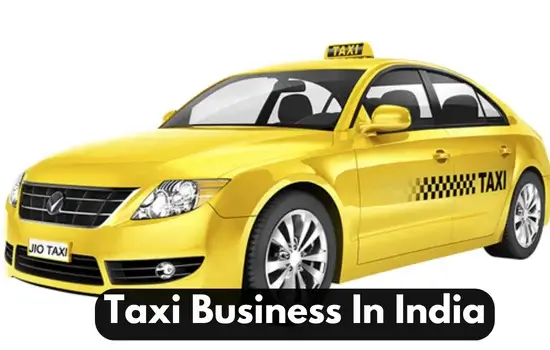Royal Enfield, a subsidiary of Eicher Motors, stands as one of the world’s oldest motorcycle manufacturers in continuous production, with a rich heritage dating back to 1901. Renowned for its iconic models like the Bullet, Classic, and Himalayan, the brand has cultivated a dedicated following among motorcycle enthusiasts. As of January 2025, a comprehensive SWOT analysis (Strengths, Weaknesses, Opportunities, Threats) provides insights into Royal Enfield’s current market position and future prospects.
Strengths
1. Robust Brand Heritage and Loyal Customer Base: Royal Enfield’s storied legacy and distinctive retro-styled motorcycles have fostered a strong brand identity, resonating with riders seeking a blend of classic aesthetics and modern performance. This unique positioning has cultivated a loyal customer base, particularly in India.
2. Dominance in the Mid-Size Motorcycle Segment: The company maintains a leading position in the 250cc-750cc motorcycle category, appealing to consumers desiring powerful yet stylish bikes. This segment dominance underscores Royal Enfield’s strategic focus and product alignment with market demand.
3. Global Expansion and Market Penetration: Royal Enfield has successfully extended its footprint beyond India, establishing a presence in over 60 countries, including strategic markets in Europe, North America, and Southeast Asia. This global outreach has diversified its customer base and revenue streams.
4. Innovative Product Development: The introduction of new models, such as the Interceptor 650 and Continental GT 650, has been met with positive reception globally. Additionally, the company’s venture into electric motorcycles indicates adaptability to evolving market trends and a commitment to sustainable mobility solutions.

Weaknesses
1. Quality and Reliability Concerns: Despite improvements, Royal Enfield motorcycles have faced criticism regarding mechanical issues and maintenance requirements. Perceptions of inconsistent quality can deter potential buyers who prioritize reliability, especially as competition from global brands with robust quality standards intensifies.
2. Limited Product Range: The company’s focus on the mid-size motorcycle segment, while a strength, also represents a limitation. This concentration restricts its ability to cater to a broader customer base seeking diverse motorcycle types, such as entry-level or high-performance models.
3. High Dependence on the Indian Market: A significant portion of Royal Enfield’s revenue is derived from the Indian market. This reliance exposes the company to risks associated with regional economic fluctuations, regulatory changes, and market saturation.
Opportunities
1. Electric Vehicle (EV) Transition: With the global automotive industry shifting towards electrification, Royal Enfield’s development of its first electric motorcycle, slated for launch in the financial year starting April 2025, positions the company to meet emerging consumer preferences and regulatory requirements.
2. Expansion into Emerging Markets: Increasing disposable incomes and urbanization in emerging markets present opportunities for Royal Enfield to expand its customer base. Tailoring products to meet the preferences and needs of these markets can drive growth and market share.
3. Diversification of Product Portfolio: Developing new models, including electric and adventure motorcycles, can attract a broader audience. Innovations in design and technology can enhance the brand’s appeal to younger and more diverse demographics.
4. Strategic Partnerships and Collaborations: Forming alliances with technology firms, design houses, or other automotive companies can facilitate innovation, improve product offerings, and expand market reach. Such collaborations can also aid in navigating the complexities of new market entries.
Threats
1. Intensifying Competition: The mid-size motorcycle segment is attracting new entrants and increased competition from established brands. Collaborations between global motorcycle manufacturers and local companies, such as Triumph’s partnership with Bajaj Auto and Harley-Davidson’s alliance with Hero MotoCorp, pose significant competitive challenges.
2. Economic Fluctuations: Global economic uncertainties, including recessions or currency fluctuations, can impact consumer spending on discretionary items like motorcycles. Such economic factors can affect sales volumes and profitability.
3. Regulatory Changes: Evolving environmental regulations and emission standards require continuous adaptation in product design and manufacturing processes. Non-compliance can lead to financial penalties and reputational damage.
4. Supply Chain Disruptions: Dependence on a global supply chain makes Royal Enfield vulnerable to disruptions caused by geopolitical tensions, natural disasters, or pandemics. Such disruptions can affect production schedules, increase costs, and impact product availability.
Conclusion
As of January 2025, Royal Enfield’s enduring brand legacy, strategic market positioning, and commitment to innovation underscore its strengths in the global motorcycle industry. However, addressing quality concerns, diversifying the product portfolio, and reducing dependence on the Indian market are critical areas for improvement. Embracing opportunities in electric mobility, expanding into emerging markets, and fostering strategic partnerships will be pivotal for sustaining growth. Simultaneously, navigating competitive pressures, economic uncertainties, regulatory changes, and supply chain vulnerabilities will require agile and proactive strategies to ensure continued success.














